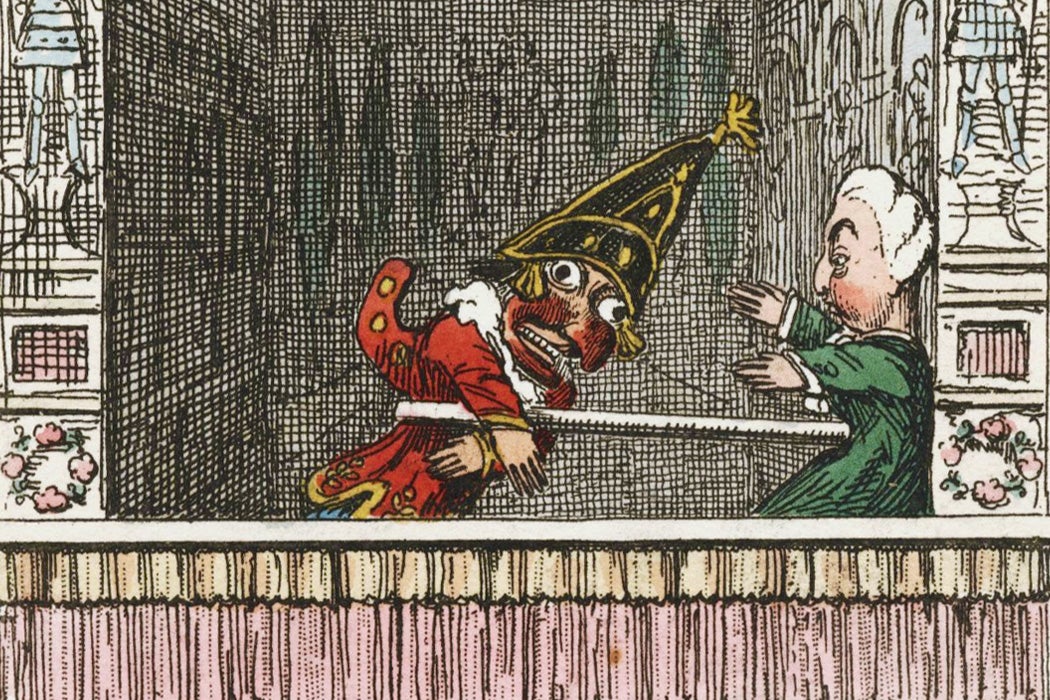When it comes to children’s entertainment, how much violence is too much? As historian Rosalind Crone writes, that question was very much on the minds of the nineteenth-century London puppeteers who introduced children to the super-violent world of Punch and Judy.
The character of Punch, who had previously figured in street shows in the form of a marionette, was transformed into a glove puppet around 1800. While the old Punch had been a “hen-pecked buffoon,” Crone writes, the new one was a “murderous wife-beater.” While that was probably partly because the puppet was good at swinging a stick, it also reflected a shift in domestic life at the time.
In one apparently representative Punch and Judy performance in 1827, Judy appears as an ugly and “disorderly” wife, slapping Punch and then leaving their baby in his care. When the baby begins screaming, Punch throws it out the window. Judy returns and, learning of her child’s death, begins hitting Punch, who eventually kills her with a stick and celebrates the murder with a song. While Punch was also known to beat and murder a cast of other puppets, including a blind man and the devil, the conflict with his wife remained the most consistent and popular aspect of the shows.
Crone writes that at this time, images of marriage in English popular culture generally took on a more misogynistic tone. It was a historical moment when large-scale production reduced job prospects for artisans. Unable to make the traditional leap from bachelor journeyman to married, financially stable master, many men found themselves married with kids but without the money to support a family. That meant they also needed their wives to earn money, which undermined their dominance in the house.
According to Crone, the audience for the London street shows was mostly adult men, including members of all social classes. In high-class publications of the time, writers used the figure of Judy to describe other disorderly women. In contrast, they seemed to see Punch as an attractive antihero.
Toward the middle of the nineteenth century, domestic culture rose in importance, and entertainment for the middle-class and wealthy moved indoors. Puppeteers found the audience for street shows diminishing. A new market emerged for privately commissioned indoor shows for middle-class children.
Weekly Newsletter
Crone writes that showmen changed the performance for family audiences, often replacing the devil character with a bear or “Bogeyman.” Sometimes they allowed the puppets to survive their beatings, while other times they went in an opposite direction, exaggerating the violence and pairing it with childish dialogue for a cartoonish effect. An 1883 script for a family Punch and Judy show suggests some changes to make the performance more palatable but assures readers that the “hunchbacked hero still flings his offspring out of the window; still playfully murders his spouse.”
Crone writes that performers often further displaced the violence from “real” middle-class life by giving the puppets Cockney accents. Yet at the same time, these performances offered children clues to the limits of appropriate Victorian female behavior and the power of male violence to enforce them.







